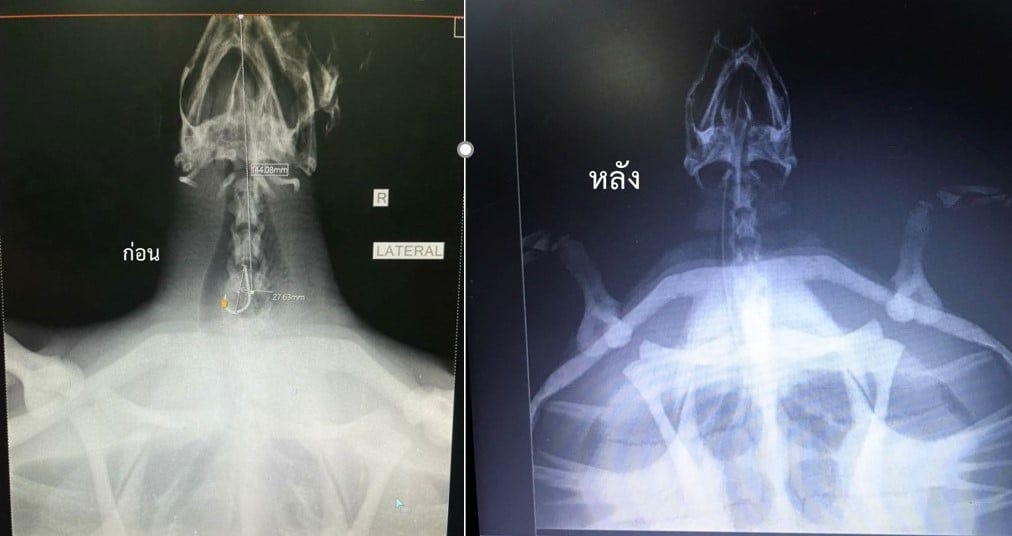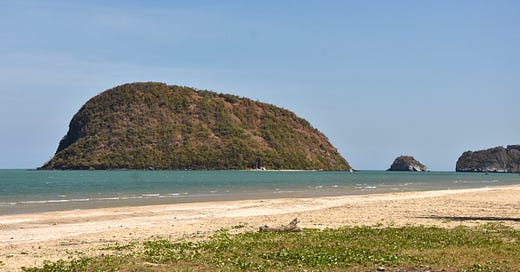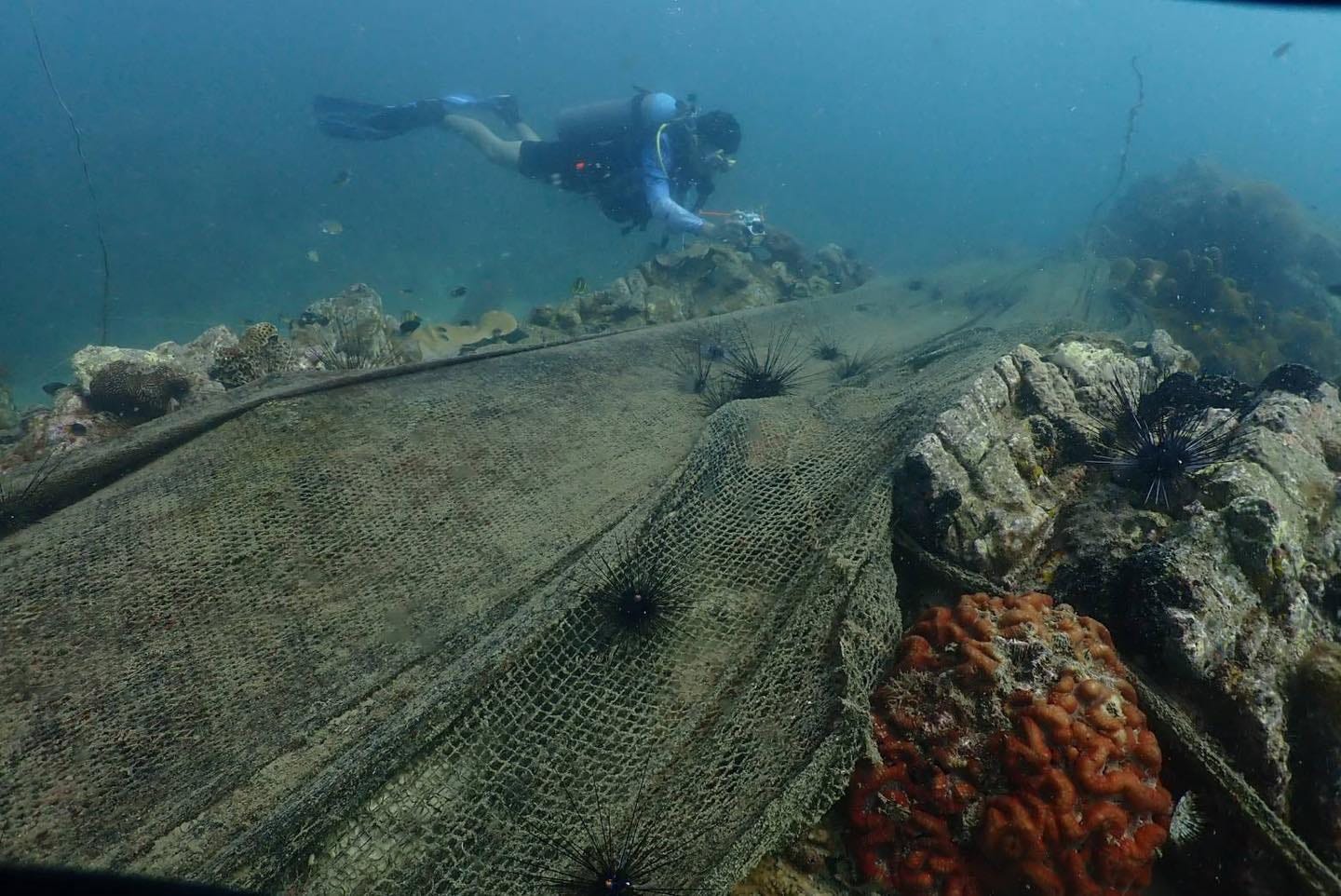Dugong conservation gets a boost and the risks from rising seas increase
Island Wrap #47: Travel & Environment edition for June 26 to July 9, 2021
Welcome to the Island Wrap at Thai Island Times. If you’re not a subscriber, why not sign up for free to get islands in your inbox?
Covid-19 continues to dominate the news cycle in Thailand as daily case numbers climb close to 10,000 and strict containment measures are imposed on Bangkok and several other areas. Next week I’ll update you on the deepening crisis and the latest on the ongoing reopening of Phuket and Ko Samui to inbound travel with minimal quarantine. Today, however, I invite you to take a break from pandemic news with this travel and environment edition of the Island Wrap.
Along with last week’s Covid-19 report, my latest articles both relate to the reopening of Phuket on July 1st. I started by digging into problems that potential travelers have been encountering while trying to apply for the Sandbox program, and then I put together a highlight reel, of sorts, from the media coverage of the big Phuket Sandbox launch day on July 1st. Since then, some hiccups have occurred.
On Friday, Chin and I sat down with travel enthusiast and live-streamer Dave in Osaka for a live interview about the pandemic’s impact on travel in Thailand. We got a solid 45 minutes in before a power outage here in Bangkok cut it short.
Pick of the Wrap: ISLAND
Off the northern coast of Khao Sam Roi Yot National Park lies a cluster of islets with no human inhabitants and no development except for a shrine on Ko Nom Sao. With a name meaning ‘Breast Milk Island,’ its shaggy hill resembles a breast — at least that’s how some of the locals saw it a while back. Centuries ago, this comparison was enshrined in local mythology via a legend involving a woman, her marriage and an ox cart, which, according to the legend, transformed into neighboring Ko Kho Ram. The monkeys who live there and the shrine on Ko Nom Sao can be reached by kayak from Hat Sam Roi Yot (aka Hat Nom Sao), Ao Bang Pu or Laem Sala. Also note, there exists a second Ko Nom Sao consisting of two islets in Phang Nga Bay.
Rising seas and ghost nets
New research using Light Detection and Ranging (LiDAR) data from satellites revealed that elevation estimates from previous studies were off by several meters in some places, meaning that the threat from rising seas is greater than previously thought in low-lying coastal areas. “The study estimates that 157 million people in tropical Asia now live in areas below two meters above sea level, the range where impacts are predicted to be severe,” reports Jack Board for CNA.
More than 10 million of those people are in Thailand, mainly in Bangkok and nearby provinces where the Gulf has already encroached more than 100 meters inland in parts of Samut Prakan and Phetchaburi. In areas like these, tap water has been turning brackish at certain times of year as some crops die as a result of the increasing salinity creeping up inland waterways. The new LiDAR research comes on the heels of a recent Greenpeace report which claims that “more than 96% of Bangkok’s land area could be flooded should a 10-year flood occur in 2030.”
In coral news, the discovery of an enormous “ghost net” stifling the reef at Ko Losin last month attracted widespread media attention, but it was far from an isolated incident. The truth is that divers from Thai government agencies and volunteer groups remove sizable nets and other fishing debris from Thailand’s reefs on a weekly basis. One recent example comes from Ko Maniwichai in Chonburi province, where divers freed a large reef from a 23x18 meter discarded net on July 3rd.
Wildlife news
Another step towards better saving the endangered dugongs of Trang province was taken on July 9th with the establishment of a 50-square-km protection area. Marked by dozens of large yellow buoys, the area encompasses seagrass patches near the mainland as well as those found closer to Ko Libong and parts of the shallow sea in between, where the dugongs commonly travel. Only non-harmful fishing methods and boats can be used in the area, according to the Dept. of Marine and Coastal Resources (DMCR). Conservationists hope to see similar protective measures enacted for the smaller dugong herd that lives further north near Ko Si Boya.
A new whale watching season is underway in the upper Gulf near Phetchaburi, where two Bryde’s whales appeared on July 3rd. They’re commonly seen scooping up hundreds of small fish in the area from around July through December each year. Meanwhile, an autopsy on a Bryde’s whale carcass that found floating further south near Ko Thalu showed that it likely died of natural causes.
Around a dozen false killer whales thrilled a boatload of people within a half-km of Ko Tao on June 24th. A day later, this relatively large and sharp-teethed species of dolphin was spotted west of Ko Tarutao in the lower Thai Andaman.
Data from the tracking devices placed on the shells of two green sea turtle mothers showed that both spent much of their time feeding amid the seagrass near Ko Libong before swimming some 350 km north to nest on some of the protected islands in Mu Ko Similan Marine Park. Over in the upper Gulf, four more green sea turtle nests were laid on Ko Thalu, bringing the season total in Ao Siam National Park to 13. Check out this video of the latest nest being laid after dark on July 8th.

Another green sea turtle is getting a second chance at life after washing up sick and starving near Bang Saen Beach in Chonburi last month. X-rays taken at a sea turtle research facility showed that a swallowed fishing hook was the problem, prompting scientists removed the hook and start nursing the turtle back to health. If all goes well, it will be released back into the Gulf in a month or two.
In serpentine news, a 30-kg python was safely captured in a garage in Pattaya, while reptile rescuers struggled to remove a 40-kg python that had been “stealing fish” down in Krabi. Not too far away from where the fish thief turned up, it took only five minutes to apprehend a four-meter king cobra that had curled up under a car.
Wrapping up the recent wildlife news is a set of camera-trap images from Si Phang Nga National Park. Making appearances were a rare tapir and spotted lemurs, among several other species found in the remote wilderness north of Khao Sok.
Social media corner
A terrific thread by @RichardBarrow features 10 photos taken from the 34th floor of a building in the Pak Nam area of Samut Prakan, a province southeast of Bangkok that’s generally considered part of the Bangkok metro area. Each coming with Richard’s explanations, the vistas include rivers, canals, mountains, breathtaking cityscapes and even some islands in the upper Gulf of Thailand.


Food and travel
Beyond the coast — Karnjana Karnjanatawe for Bangkok Post:
Learn about historical highlights of Prachuap Khiri Khan, including King Mongkut’s 1868 total solar eclipse observation at Hat Waghor and the landing of Japanese troops at Ao Manao on December 8th, 1941. In a second article, the same writer describes a search for the perfect durian in the Pala-U area west of Hua Hin.
How going back to basics has rekindled authenticity in a canal-side town — Phoowadon Duangmee for Thai PBS World:
A look at how the pandemic has changed things in Amphawa, an atmospheric town southwest of Bangkok that’s known for its floating market along with Thai sweets, Thai mackerel and heritage architecture.
New UNESCO heritage bid for forest site — Bangkok Post:
The Thai government’s fourth try at convincing UNESCO to grant Kaeng Krachan National Park world heritage status is unlikely to succeed, yet again, due to an ongoing conflict between the government and the indigenous Karen people. The last attempt to win world heritage status for Thailand’s largest national park failed in 2019 due in part to resistance from ethnic Karen activists who seek native land rights.
Ko Kood is a paradise for fossil hunters — iamKohChang:
Ian shared an intriguing research paper explaining the many types of dinosaurs that roamed Ko Kood millions of years before it became an island. Come to think of it, Ko Kood would make a great setting for the next Jurassic Park film.
Video corner
Samut Prakan province is a recurring theme in this Island Wrap, but not for positive reasons apart from Richard Barrow’s thread. In this video report from Al Jazeera, journalist Tony Cheng explains why the installation of hundreds of shockingly expensive lamp posts sparked an outcry among many Thai people — and not only in Samut Prakan. The controversial procurement of the lamps through a single company is now being probed by the National Anti-Corruption Commission.
(Source: Al Jazeera English)
In other news
Factory inferno kills 1, at least 60 injured — Bangkok Post:
The Ming Dih Chemical factory fire in Bang Phli district of Samut Prakan on July 5th was one of the largest in recent Thai history. After a huge explosion that was caused by a chemical leak, the blaze spilled harmful chemicals into the air and forced the evacuation of 1,992 people who live within a five-km radius. A 21-year-old volunteer firefighter died in action, drawing attention to the inadequate protective gear worn by the fire brigades that came to fight the blaze. More than 80,000 people were affected, and the Industry Ministry has told the company to relocate.
Tired of being ignored, volunteers at Phuket Dog Shelter lodge complaint with governor — The Phuket News:
“The livestock officers must know full well that there are only six staff at the shelter who are responsible for taking care of almost 1,000 dogs and who operate on an insufficient budget.” A pandemic is no excuse to stop caring for pooches. 🌴
If you’ve been enjoying Thai Island Times, please help to keep it alive by making a $5 USD monthly contribution if you’re able. If you’d prefer to make a one-time donation in any amount, you can do so here. For a Thai bank transfer, please get in touch.





